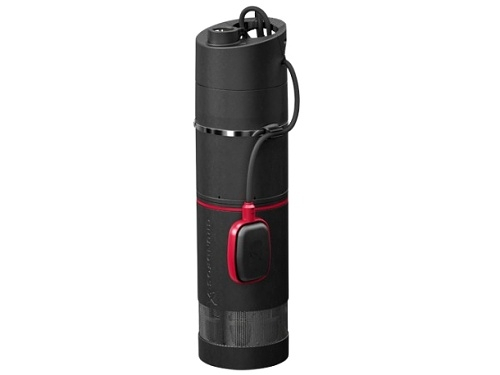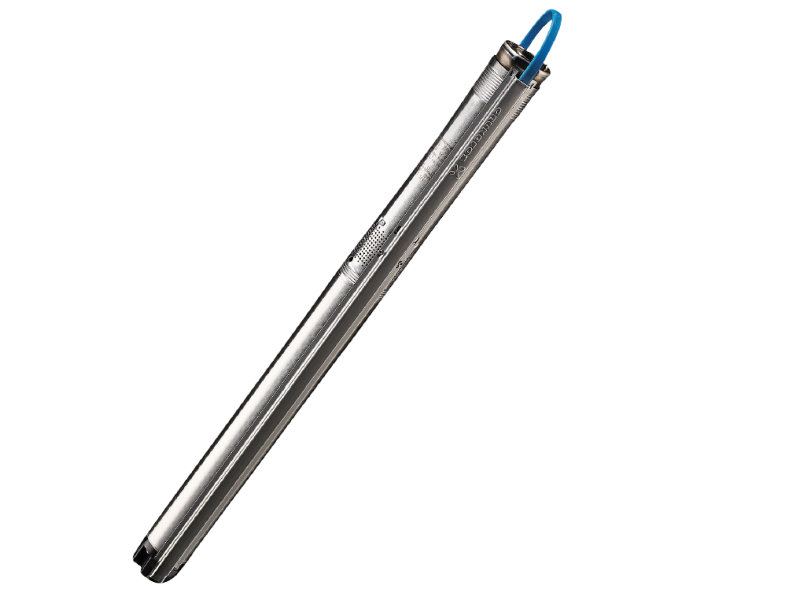Own well is an advantage of any property. Not only is it not necessary to carefully watch your water consumption, in addition, if it is a deeper well, the water is usually of a higher quality. Domestic waterworks can be used for pumping from tanks from a depth of about eight meters. However, the optimal solution for deeper wells is to use a submersible pump, which is directly designed for this purpose.
Well pumps are electromechanical devices used to pump clean water from wells or tanks. They are suitable for household drinking water supply and irrigation. Modern well pumps offer high reliability and durability with low electricity consumption. We only sell pumps from leading brands Wilo and Grundfos, which guarantee many years of trouble-free and comfortable operation.
When choosing a suitable pump, it is necessary to take into account the type of well or borehole and the depth from which the water will be pumped. It is also important to choose a pump with a suitable capacity with regard to the yield of the water source and the expected consumption. If your pump is too powerful it can unnecessarily increase electricity consumption. Excessive speed of pumping can even lead to damage to the well.
It is also necessary to evaluate to what head the pump will push the liquid. This ability of the pump is expressed by a value called the discharge. It is also necessary to consider volumes of water pumped. Flow indicates the ability to pump a certain volume in a certain period of time. The maximum immersion depth is also an important variable.
For example, the Grundfos SBA 3-45A submersible pump offers a maximum head of 43 meters and a pump flow of up to 6.3 m3 per hour, it can be submerged to a depth of 8 meters.
For some types of installations, the size of the pump and its placement also play a role. On our site the submersible pumps for wells are of a diameter from 120 mm. For some of the types, vertical and horizontal installation is possible. Renowned pump manufacturers also supply their products with a certificate for drinking water.

The hydraulic part of the pump, and sometimes its casing, are usually made of stainless steel to prevent corrosion. It is usually fitted with a non-return valve, with a lifting eye for the cable, or with a cable of a suitable length and a controller. Some of the pumps do not need a separate control unit. All pumps have, of course, built-in thermal protection of the motor and the protection against dry running, which ensures a long service life and smooth operation of your pump.
Some submersible pumps are equipped with a so-called float switch. It is a float attached by a cable to the body of the pump itself. The switch allows the pump to run automatically and disconnects the pump motor when the water drops below a certain level to prevent dry running or excessive pumping.
Some pumps can also be equipped with a floating suction basket, which allows water to be pumped from top levels and prevents dirt from being sucked in from the bottom of the well.
Types used vary depending on the type of well. In some cases, it is possible to find drinking water several meters below the surface. This simplifies digging the well - the excavation is shallower and the water level to be pumped is lower.
For dug wells, a larger diameter pump can be used - for example Grundfos SBA 3-45A with a diameter of 150 mm.
In areas where there is no surface water, or this water is not of suitable quality, it is necessary to drill much deeper boreholes and therefore adapt the type of pump that will be used for our home or cottage.
In this case, it is crucial to pick the correct diameter of the pump, as the drilled wells are significantly narrower. Seek pumps for narrow boreholes with a diameter from 74 mm.
Submersible pumps can be used in shallow wells, but these wells must not contain dirt that can shorten the life of your pump. We recommend drainage pumps for heavily polluted environments.

Nowadays, we usually pick a self-priming pump for pumping water from shallow wells. Self-priming pumps are installed above your well, either in the house or in the basement, and are designed to draw water from the well. Atmospheric pressure takes care of all suction. Simply put, the system works like a long straw. As the pump draws in, it creates a vacuum in the line. The vacuum then pushes the water up the pipe. As a result, the weight you are able to pump is proportional to atmospheric pressure.
Although the atmospheric pressure changes with altitude, the usual suction depth from which it is possible to draw is about 7.6 meters. To maintain optimal function, these pumps are usually fitted with a one-way non-return valve (check valve).
Submersible pumps are elongated cylindrical devices that fit in a well. The lower half consists of a closed motor connected to an above-ground power source. The pump itself in the second half of the unit consists of impellers, separated by a diffuser. The diffuser drives the water into the pipes and the water supply. In modern installations, submersible pumps are connected by a pipe leading directly to the cellar.